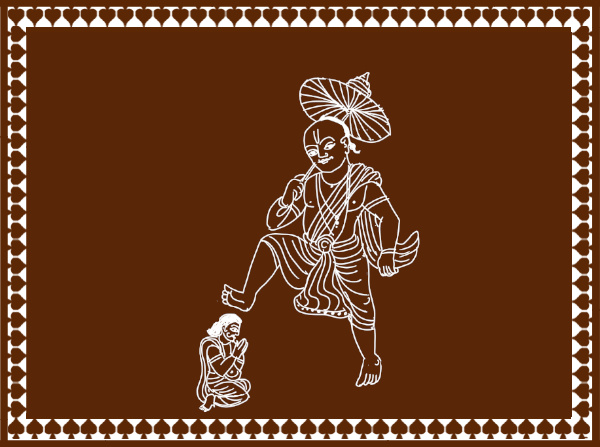
Diwali festival is composed of a cluster of auspicious days. It begins with Vasu Baras a day dedicated to thank and honour the cows for their service to the community, followed by Dhana-trayodashi celebrating the birth of the god of health Dhanvantari. Next comes Narak Chathurthi celebrated as the Deepavali or the festival of lights when Lord Krishna killed the asura Naraka ( also recounted as Ram’s victory over Ravan). Followed by Lakshmi pujan when goddess Lakshmi is invited and worshiped in every home to bring prosperity and wealth. Then comes Bali Pratipada or the Hindu New year or Padva.* Diwali celebrations conclude with Bhaubeej or Bhaidooj a day when a brothers and sisters renew their bond by visiting each other at their home.
Padva or Hindu new year, known as Bali Pratipada is dedicated to King Bali. King Bali was a kind and a righteous king belonging to the Asura or Daitya race, who are the arch-enemy of Devas. Among the literary sources Bali is mentioned in the myth of Vaman avatar, the fifth avatar of lord Vishnu. The popular myth recounts how Vishnu assumed the form of Vaman and tricked King Bali by stepping on his head and thrusting him into Patal or the nether region. Unlike regular stories where hero and villain are clearly marked into good and evil characters, King Bali was no villain and yet he was tricked and subjugated and banished from his kingdom. However, it is believed that King Bali visits earth to meet his subjects once a year and people celebrate his homecoming as the New year. The southern Indian state of Kerala celebrates it as Onam, and in North India it is celebrated as Bali Pratipada.
Who is King Bali?
There are not that many stories about King Bali in the scriptures. However, King Bali has a distinct place in the oral histories and narratives found among the indigenous people and especially agrarian communities in India. In Goa, Bali is a prominent god of Kulmi or Kurmi community who are the indigenous people and the first settlers of the land. They consider Bali as their ancestor or originator who taught them the art of agriculture. It is believed that Bali was the first man whom Ishwar the supreme god gave the knowledge of agriculture.
In the beginning when earth was formed, Ishwar came to earth and created rivers, trees mountains, animals and man. After creating the world he felt thirsty, and looked around for fresh water to drink. Birds and animals fetched him water from different water bodies nearby, but Ishwar wanted water that was not only pure but was untouched by hands and unseen by eyes. No one could fulfil such condition and Ishwar started dying of thirst.
A wise crow who was watching the scene from far, came to King Bali and told him the secret of getting water that is untouched and unseen by humans. He gave him the coconut fruit and asked him to give it to Ishwar. Bali took the coconut fruit to Ishwar and offered it to Ishwar by breaking the coconut and giving him the water inside it, which was untouched and unseen by any living being. Ishwar was pleased by Bali’s gesture and blessed him with the knowledge of agriculture and said all human race particularly farmers, will consider him as their god. Saying thus Ishwar disappeared into the stone pole or linga. In Goa, Bali is still venerated in the form of a pole or Stambha. In every Kulmi homes there used to be erect pole like linga made of wood or stone in the centre of their home. Even today, Kulmi community offers coconut water over the pole/linga during auspicious days recounting the myth of Bali.
In another narrative it is said, when earth was being formed and was still not solid, a huge Areca (Areca catechu) nut tree emerged from its centre, that covered all the three worlds of Nether- region( Patal) , Earth( Bhu) and Heavens( swarga). King Bali was placed at its roots ( the region of Patal which was covered by Ocean waters) while gods where perched on its leaves (swarga or heavens). Then Ishwar declared, the one who first sets his foot on earth will own the earth. Soil on the earth had not hardened and was still very soft and viscous. Gods feared that if they set their foot on the soil, it might cave in and they might get sucked into Patal or nether region. But Bali was a brave and courageous man, he cautiously started walking on the earth, and covered the entire landmass. Ishawara declared him to be the first king of the earth or ‘Bhupati’. Thus Bali ruled over Patal,Ocean, and the earth. Soon he learnt the the art of tilling the earth and started cultivating the land. He passed on this knowledge of agriculture to humans and thus prosperity and wealth came to mankind. Farmers till today recognise his contribution by venerating him as the first hero or god.
Fishing communities in Goa too consider King Bali as their ancestor and worship him as their god. Folk myths narrate that Once when King Bali was busy tilling the land, gods killed his son by deceit. When Bali’s wife found their son dead, she came crying to Bali and informed him of the son’s death. Bali realised that gods had killed his son. He remained calm and asked his wife to go back home and cover their son’s body with leaves and cook a sumptuous meal. Bali belonged to asura race and thus Shukracharya was his guru. When he returned home he brought his guru Shukracharya with him for a meal and requested him to bring his son back to life. Shukracharya with his yogic powers, brought Bali’s son back to life. But since his son had visited Patal (land of dead) he could no longer walk on Earth and so Bali sent him to rule the Ocean. Fisher community of Goa believes that they learnt the art of fishing from the son of King Bali. Once in a year they celebrate the homecoming of King Bali by taking a procession around the town.
Bali’s role and contribution as the first agricultural hero gets recognised during the celebration of the new year or Padwa in his name as ‘Bali Pratipada’ marking the dawn of Indian civilisation.
*The order of auspicious dates change according to the Hindu calendar and need not follow the order as suggested.
Story collected by Vidya Kamat
Text Source: Ramayana and Baliraja by Pratapsingh Velip Kankar
Location: Goa
Image Copyright: Vidya Kamat







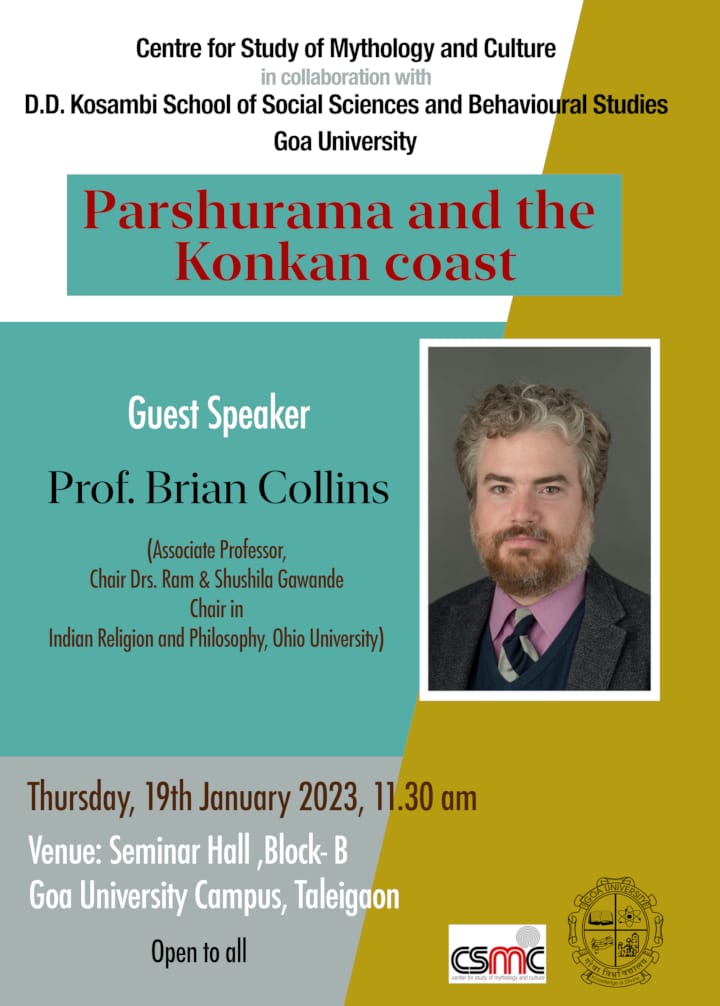
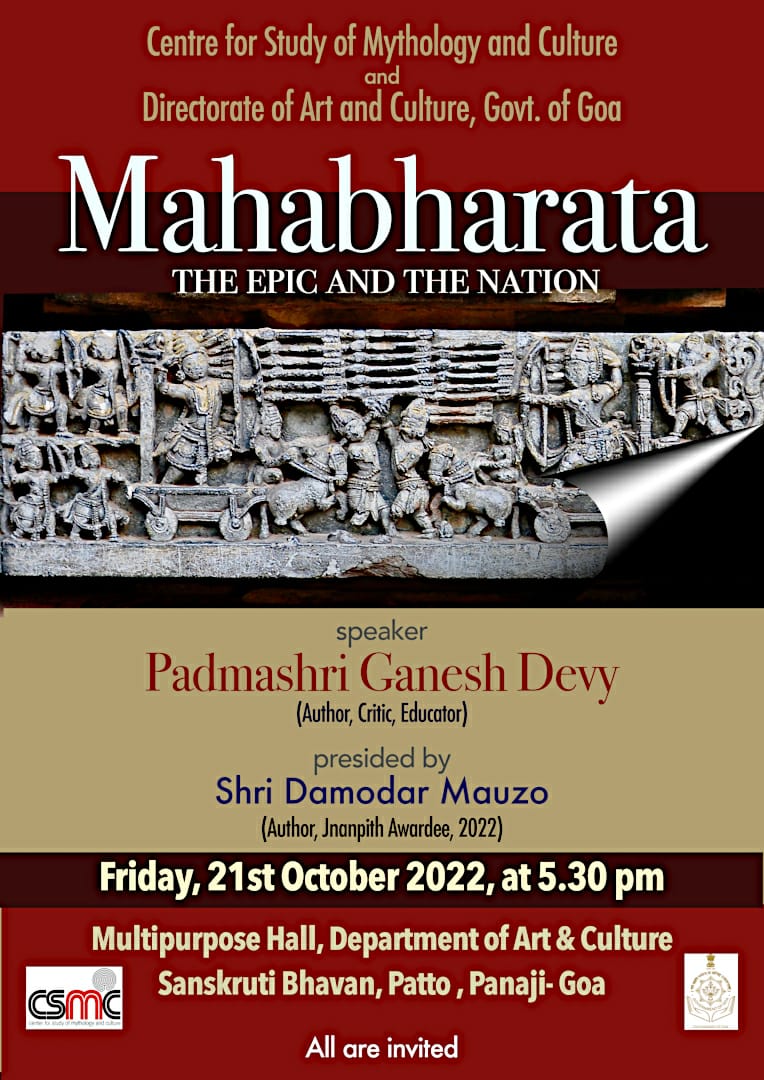
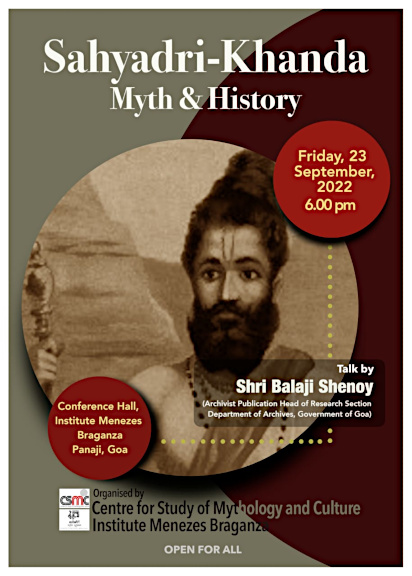
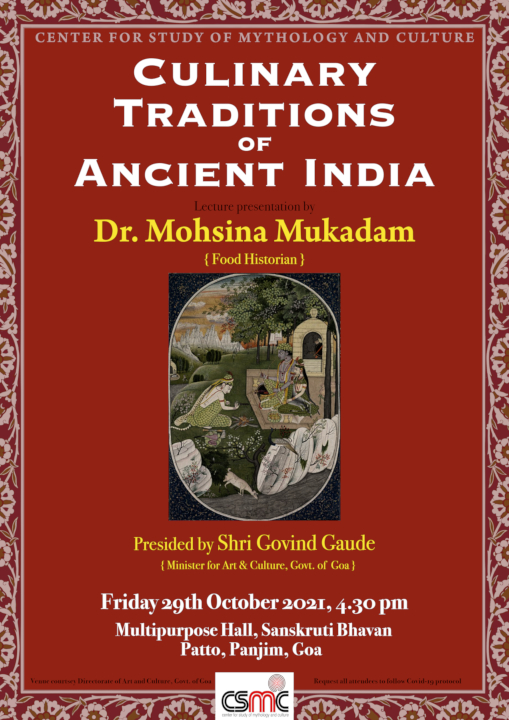

Leave a Comment